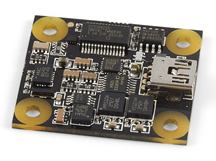|
Notice: This page contains information for the legacy Phidget21 Library. Phidget21 is out of support. Bugfixes may be considered on a case by case basis. Phidget21 does not support VINT Phidgets, or new USB Phidgets released after 2020. We maintain a selection of legacy devices for sale that are supported in Phidget21. We recommend that new projects be developed against the Phidget22 Library.
|
Simple Spatial Experiments
The project described here is a simple data recording program for the Phidget Spatial. We play with the program and record data to learn things about our environment.
Practical concepts covered are (click on links to see other projects on that topic):
|

|
As with any of our described projects, Phidgets takes care of the electrical component design. Here, we also provide some simple code so you can play around with your Spatial and save the data to plot later.
Time: About two hours (It is perfect for a Saturday morning, perhaps with your kids?)
Special Needed Tools: A Phidget Spatial, USB cord, and your computer. Your computer should have a C compiler we support (including gcc, MinGW, Borland, Visual Studio, and more), and the Phidget Libraries installed for your operating system.
Introduction
A Phidget Spatial can measure acceleration, and some models can also measure gyroscopic motion and magnetic fields.
We start with a Phidget spatial just on our desk, and then play around with it and plot the data.
